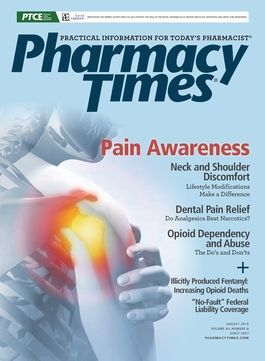Publication
Article
Pharmacy Times
What Is the Ultimate Cost of Rx Abuse?
Author(s):
I have been watching patiently over the past year or so as a variety of governmental agencies, many of them city, state, and village entities, sue pharmaceutical manufacturers and wholesalers.
Often, a lawsuit is initiated by politicians who feel they can score points vilifying large corporations that they think no one will defend. They are championed as white knights, working for the people to right a terrible injustice.
Frustrated as to how to fix the problem of addiction, these politicians and others have decided to place the blame on large corporations. These corporations, especially prescription drug companies, have deep pockets and they represent an industry that the media has taught us to hate. They make perfect villains, because the litigation will drag on, long after the next election. So, regardless of the outcome, going after these big corporations is a smart move for savvy politicians.
Their main complaint is that drug manufacturers and wholesalers are responsible for the prescription drug abuse epidemic and for these addictions leading thousands of addicts to fentanyl and heroin. The hope is that a payout will make financially struggling governmental entities solvent.
This kind of governmental behavior is applauded by many, as the public wants to blame someone. But as most of us know, there are multiple factors behind drug abuse and addiction in America. If anyone says that they have a definitive answer, do not believe it. The problem is too complex for a simple answer, and if there were easy answers, the problem would have been solved decades ago.
Are drug manufacturers and wholesalers partly responsible for the prescription drug problem? No doubt some addicts started with prescription drugs before gravitating to fentanyl and heroin, but I have trouble believing that the epidemic is the overwhelming responsibility of these corporations. Some addiction issues are the result of access through family and friends, pill mills, or traffickers.
The other issue that is often forgotten is caring for legitimate pain patients. If addiction reportedly afflicts 10% to 15% of the population, does that mean that 85% to 90% of the prescription drugs dispensed are to genuinely suffering patients? Why are these folks almost never mentioned when we discuss the prescription drug problem, especially because they are the majority of consumers of these opioid medications and, in many cases, rely on these drugs to lead normal lives?
How will these lawsuits affect the pharmaceutical industry, especially companies that manufacture and distribute controlled substances that are primarily consumed by pain patients?
Although some of these corporations have deep pockets, there are limits. There have been layoffs; some employees who have worked at these companies for decades have lost their jobs. The cost of litigating these lawsuits is mind-boggling, regardless of whether they are successful.
I am afraid that the ultimate cost of the lawsuits will be a considerable increase in prescription drug pricing, which will cause health insurers to raise premiums. This will result in the already depressed and downtrodden patients with pain struggling to obtain legitimate medications.
It is possible that some of these corporations, especially smaller ones, will be forced to file for bankruptcy protection, leading to more layoffs. I also fear that fewer companies will be willing to develop new prescription opioids after seeing the problems that these lawsuits create. Fortunately, abuse-deterrent formulations of these drugs exist and are proving to be very effective at reducing diversion, but they are already expensive.
I hope I am wrong, but time will tell.
Cmdr. John Burke is a 40-year veteran of law enforcement, the past president of the National Association of Drug Diversion Investigators, and the president and cofounder of the International Health Facility Diversion Association. He can be reached by email at [email protected] or via rxdiversion.com.

Newsletter
Stay informed on drug updates, treatment guidelines, and pharmacy practice trends—subscribe to Pharmacy Times for weekly clinical insights.






